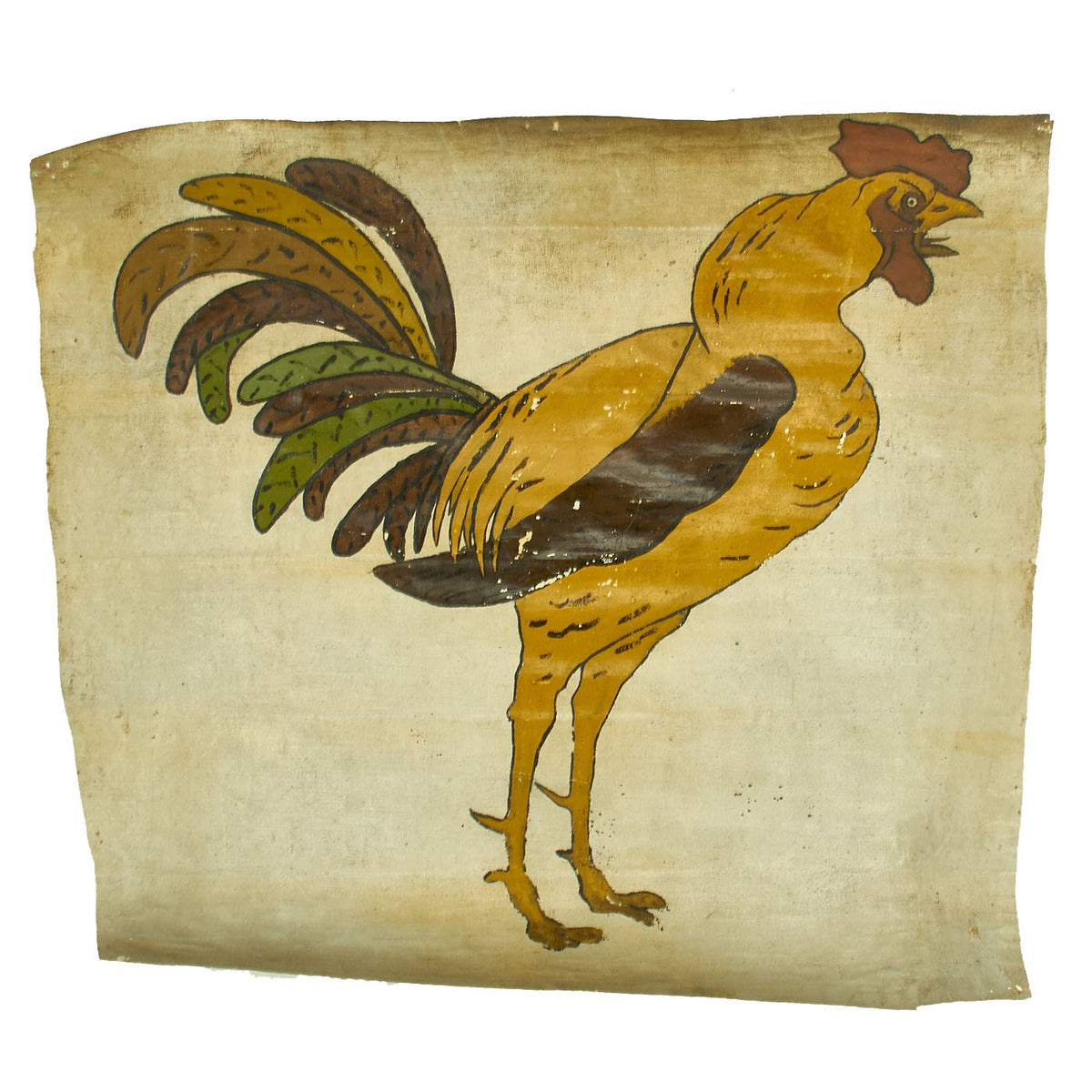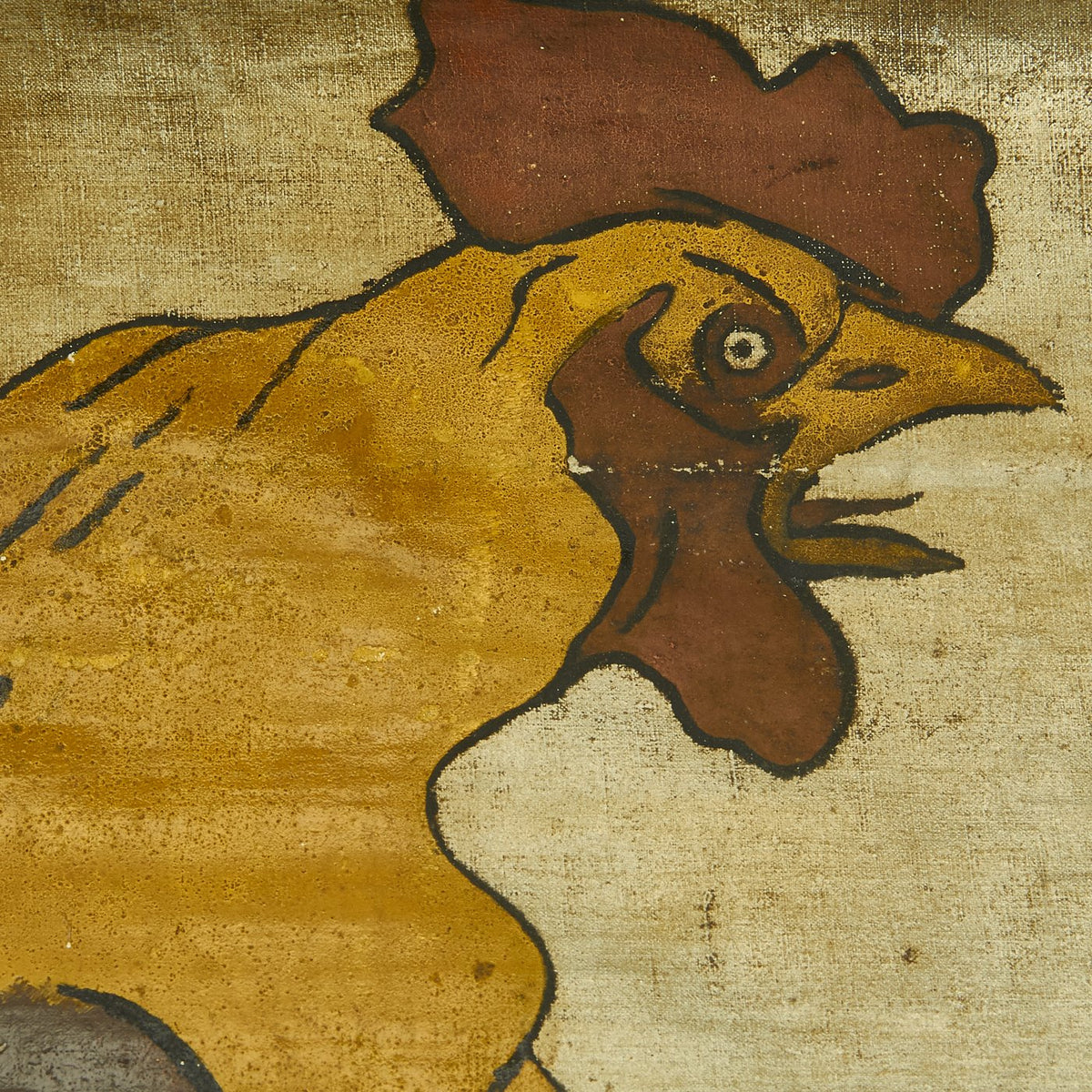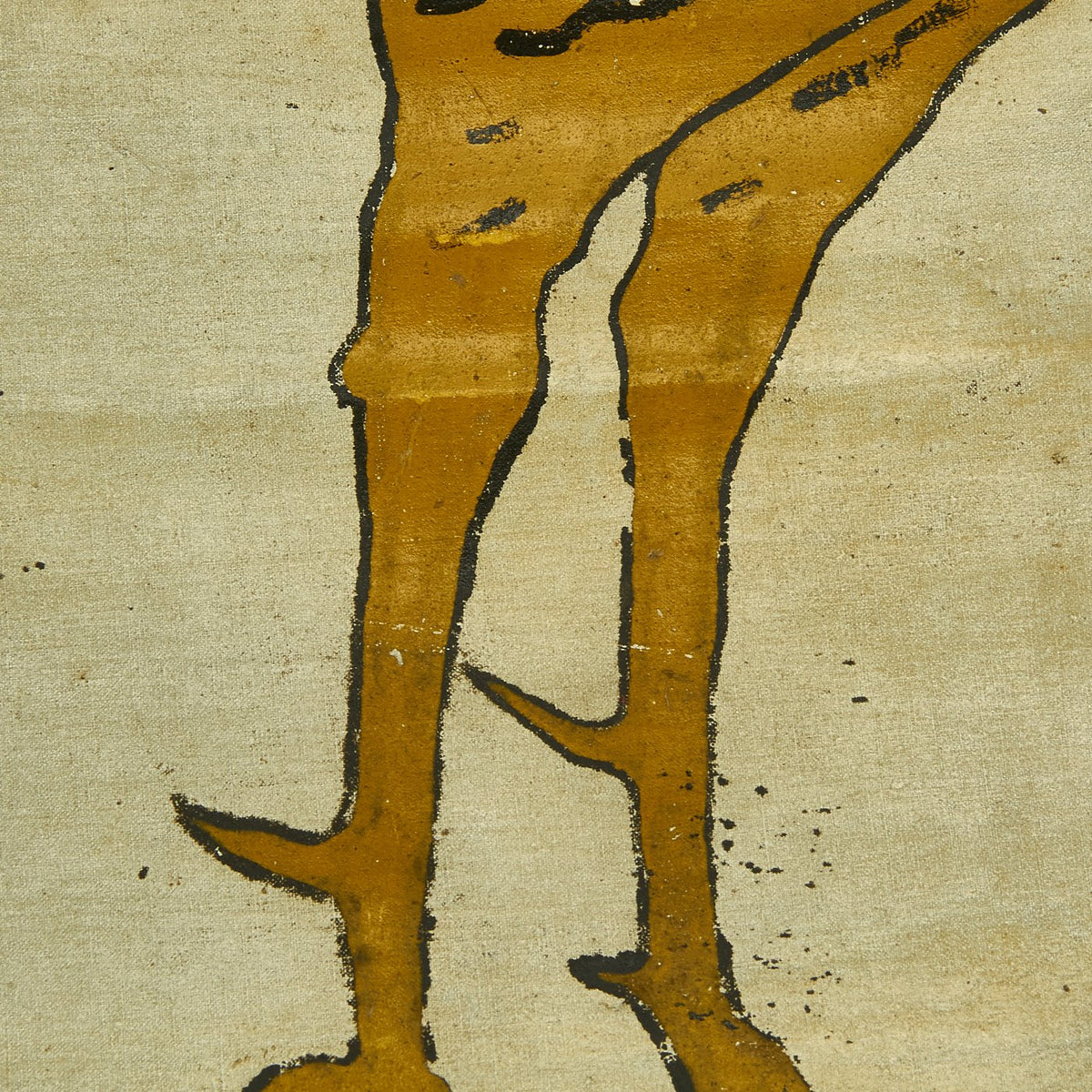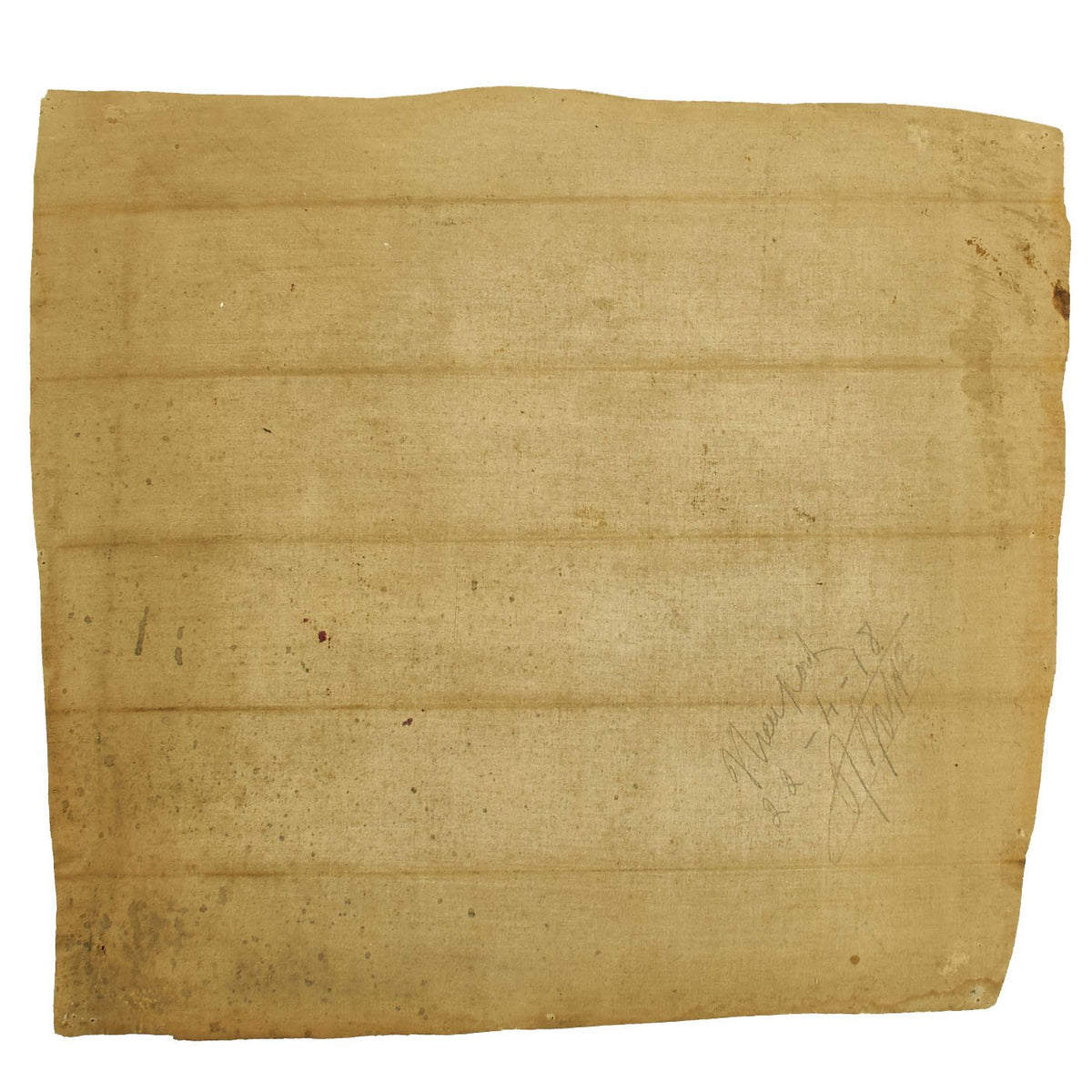Original French WWI Nieuport 11 Biplane Skin Painted Angry Rooster Insignia Original Items
$ 1.995,00 $ 498,75
Original Item: One-of-a-kind. Cut from the tail section of a Nieuport 11 Biplane, this is the skin or canvas fabric used to line the body of the airplane. This Angry Rooster insignia section was reportedly cut away from a crashed Bébé that was shot down during the Great War. The reverse side is marked in handwritten pencil;
Nieuport
22-4-18[signature]
Aircraft skin section measures 28″ x 24 1/4” and is offered in very good condition.
The insignia of the angry rooster or fighting cock was associated with Escadrille (Squadron) BR 216. It originated with Ace Paul Albert Pierre Tarascon who was born in Le Thor, France on 8 December 1882.
Tarascon joined the French military in 1901; upon his release from active duty, he was assigned to the 4e Regiment d’Infanterie Coloniale. He became interested in aviation after his release, and decided to learn to fly. In 1911, while learning to fly, he crashed so badly that his right foot had to be amputated. This would spark his later nickname: l’as la jambe de bois (the ace with the wooden leg).
Despite his handicap, when World War I began, he volunteered as an aviator and was accepted. He completed military training, receiving Military Pilot’s Brevet No. 1741 on 14 December 1914, and became an instructor in January 1915. He requested a combat assignment, and was sent to Escadrille 31 on 6 October 1915, to Escadrille 3 on 1 May 1916, and shortly thereafter to Escadrille 62.
Flying a Nieuport fighter, he scored his first win on 15 July 1916. By 17 November, he had run his total to eight victories in Nieuports. Before he resumed scoring on 6 April 1917, he had changed planes to a Spad. He scored twice more in mid-1917, then one final time on 15 July 1918. Tarascon’s personal insignia of a black fighting cock had become adopted by his squadron.
Tarascon survived the war, and rose to the rank of colonel. He fought in the French Resistance during World War II.
Paul Albert Pierre Tarascon died on 11 June 1977.
Fast Shipping with Professional Packaging
Thanks to our longstanding association with UPS FedEx DHL, and other major international carriers, we are able to provide a range of shipping options. Our warehouse staff is expertly trained and will wrap your products according to our exact and precise specifications. Prior to shipping, your goods will be thoroughly examined and securely secured. We ship to thousands clients each day across multiple countries. This shows how we're dedicated to be the largest retailer on the internet. Warehouses and distribution centres can be located throughout Europe as well as the USA.
Note: Orders with more than one item will be assigned a processing date depending on the item.
Before shipping before shipping, we'll conduct a thorough inspection of the items you have ordered. Today, the majority of orders will be delivered within 48 hours. The delivery time will be between 3-7 days.
Returns
The stock is dynamic and we cannot completely manage it because multiple stakeholders are involved, including our factory and warehouse. So the actual stock may alter at any time. It's possible that you may not receive your order once the order has been made.
Our policy is valid for a period of 30 days. If you don't receive the product within 30 days, we are not able to issue a refund or an exchange.
You can only return an item if it is unused and in the same state as the day you received it. You must have the item in its original packaging.
Related products
Uncategorized
Armored Burgonet Helmet & Polearm from Scottish Castle Leith Hall Circa 1700 Original Items
Uncategorized
Uncategorized
Angolan Rebel 1970s era 60mm Inert Display Mortar from Angolan Civil War Original Items
Uncategorized
Uncategorized
Uncategorized
Uncategorized
Uncategorized
Uncategorized
Uncategorized
Uncategorized
Uncategorized
Uncategorized
Uncategorized
Uncategorized
Uncategorized
Uncategorized
Band of Brothers ORIGINAL GERMAN WWII Le. F.H. 18 10.5cm ARTILLERY PIECE Original Items
Uncategorized
Uncategorized
Uncategorized
Uncategorized













































































